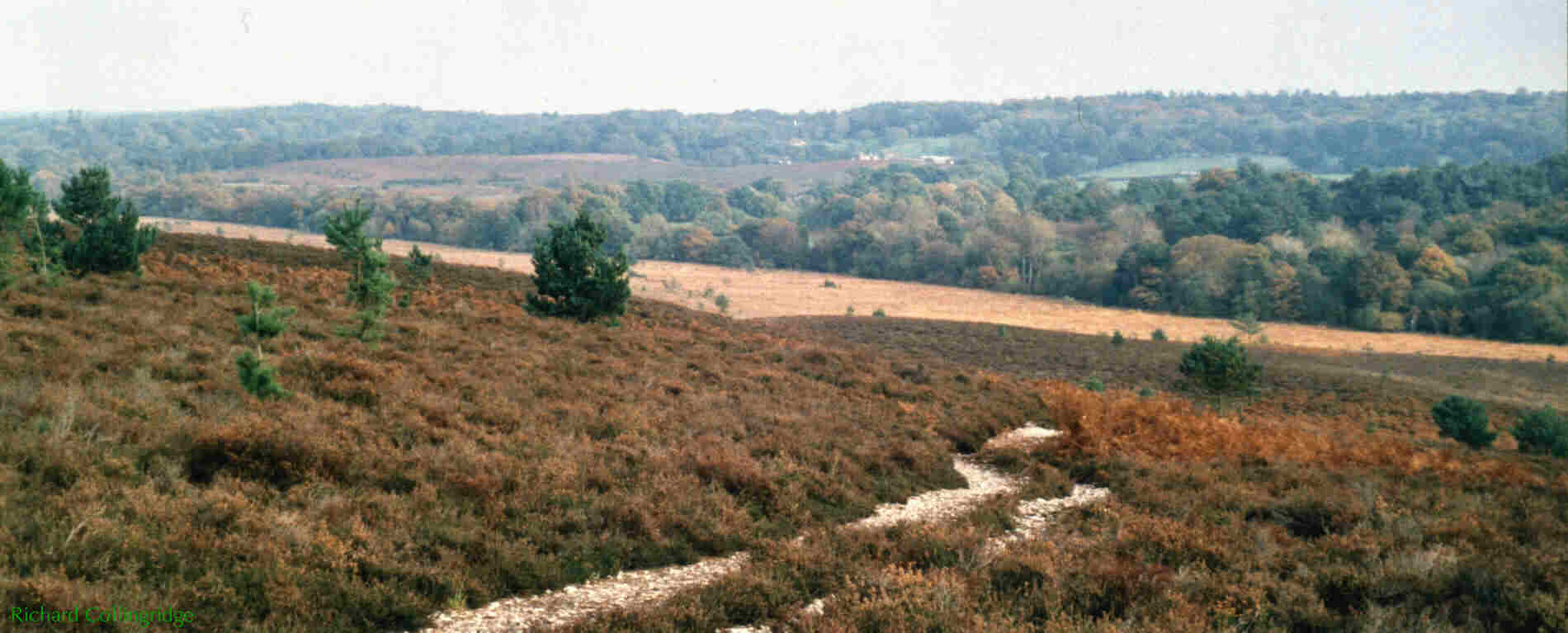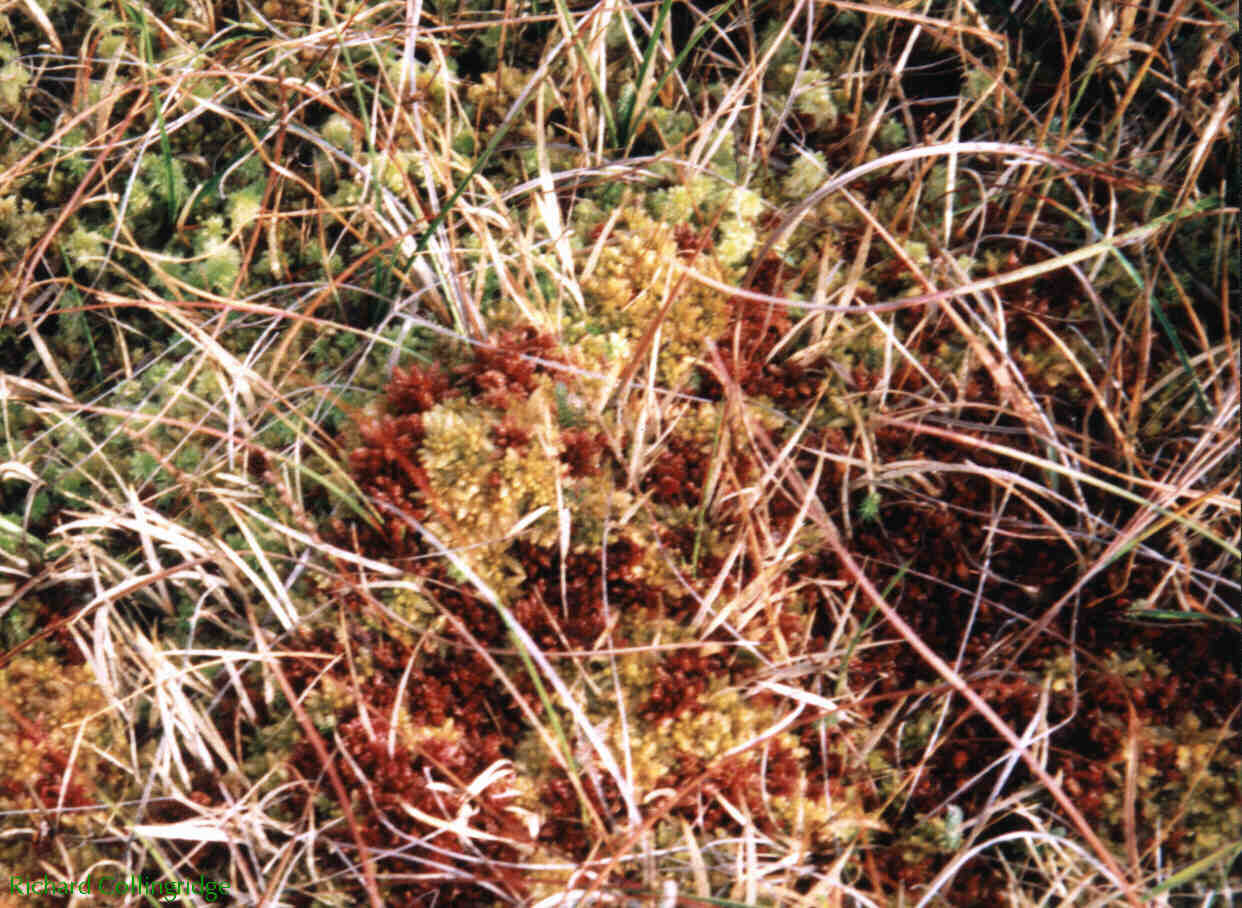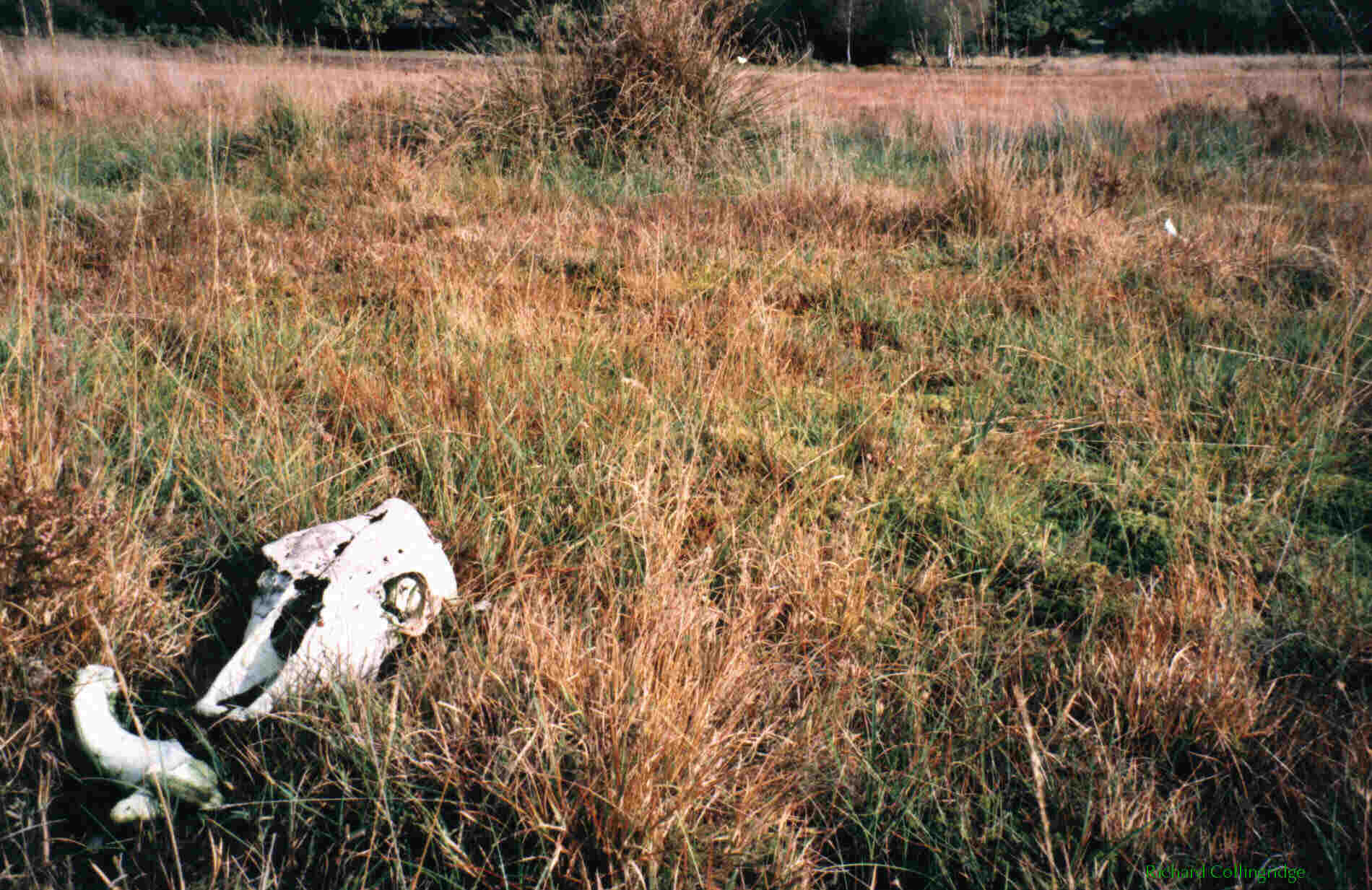Return
to Conservation Information
Contact:
E-mail:
contact@collingridge.net with "contact" in the subject line.
Phone:
+44 (0)1425 475071
Mobile:
+44 (0)7790 677163

New Forest Habitats
The soils of the New Forest are nearly all very acidic and nutrient-poor, derived from underlying sand, gravel and acidic clays. In low-lying areas are layers of peat, often many metres thick.
The habitats of the Forest are therefore composed of vegetation which can tolerate the acidic conditions. The most important habitats are heathland, bog, and several rare types of woodland. The Forest also supports many rare species, including some not found elsewhere in Britain.
Bog, heathland and acidic grassland form large open areas between the woodland. The view above shows heathland in the foreground running down to a pale strip of acidic bog and a wet woodland. In the background are the enclosed fields of the hamlet of Linwood and further woodland and heath in the distance.
Heathland is a habitat which is rare on a world scale. It is a dwarf-shrub vegetation mainly composed of various heathers (Ericaceae), in Britain particularly ling heather Calluna vulgaris, and in wetter areas cross-leaved heath Erica tetralix. In Britain heather vegetation is usually called heathland in the lowlands but moorland in the uplands; the difference is relatively subtle, but generally heathland is drier and warmer, with sandy or gravelly soil rather than harder rocks.
 The
climate of Hampshire is relatively warm and dry, and in the growing season
water evaporates fairly rapidly from the soil and vegetation. This means
that the land does not become waterlogged except in valleys and low-lying
flat land, and so wet heath and bog are confined to these areas, with dry heath on the slopes. This is different
from the situation in the uplands, where cool weather and high rainfall
mean that bog vegetation often forms a blanket even on fairly steep slopes.
The vegetation in the Forest bogs may be dominated by bog-moss Sphagnum
spp as in this picture, or by various mixtures of sedges, grasses and other
bog plants, including several insectivorous ones.
The
climate of Hampshire is relatively warm and dry, and in the growing season
water evaporates fairly rapidly from the soil and vegetation. This means
that the land does not become waterlogged except in valleys and low-lying
flat land, and so wet heath and bog are confined to these areas, with dry heath on the slopes. This is different
from the situation in the uplands, where cool weather and high rainfall
mean that bog vegetation often forms a blanket even on fairly steep slopes.
The vegetation in the Forest bogs may be dominated by bog-moss Sphagnum
spp as in this picture, or by various mixtures of sedges, grasses and other
bog plants, including several insectivorous ones.
 The
vegetation is adapted to very low nutrient levels, and tends to become
degraded if extra nutrients are brought in. This picture, taken in 1999,
shows the skull and collarbone of a cow which became mired in a bog in
1995. The effect of the nutrients from her body can still be seen in the
patch of green grassy vegetation on the right, contrasting with the brown
of the surrounding diverse bog vegetation (the green around the bush in
the background is a ground-water flush).
The
vegetation is adapted to very low nutrient levels, and tends to become
degraded if extra nutrients are brought in. This picture, taken in 1999,
shows the skull and collarbone of a cow which became mired in a bog in
1995. The effect of the nutrients from her body can still be seen in the
patch of green grassy vegetation on the right, contrasting with the brown
of the surrounding diverse bog vegetation (the green around the bush in
the background is a ground-water flush).
Richard Collingridge